




















































Tree Pittsburgh extends its heartfelt gratitude to everyone who participated in the ReLeaf California-Kirkbride planning process. From the dedicated steering committee to the enthusiastic volunteers and residents who generously shared their insights through surveys or participated in implementation projects, your contributions have been instrumental in shaping a vision for a greener and healthier California-Kirkbride
We would also like to thank our partners from the City of Pittsburgh, Western Pennsylvania Conservancy, Resilient Cities Catalyst, California-Kirkbride Neighbors, and many more for all your contributions and time in this planning process!
This plan was made possible through a generous grant from the Hillman Foundation.
Deborah Reed | California-Kirkbride Resident, Northside Coalition for Fair Housing
Gail Cox | California-Kirkbride Resident
Lenora O’Neil | California-Kirkbride Resident
Renee Smith | California-Kirkbride Resident
Shirley Seals | California-Kirkbride Resident
Tara Calhoun | California-Kirkbride Resident
Lisa Coeffe | City Forester, City of Pittsburgh
Michael Kelley | Utility Coordination Arborist
Nazia Tarannum | Principal Planner (Strategic Planning)
Clara Kitongo | Tree Equity Manager
Danielle Crumrine | Executive Director
Kelsey Munsick | Volunteer Program Manager
Nsai Temko | ACC AmeriCorps Member
Surya Lee | Community Outreach Coordinator
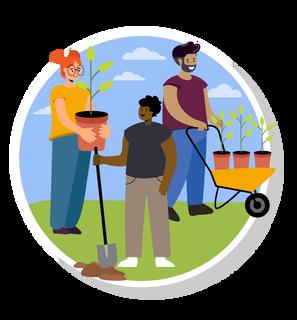

A key recommendation in the 2012 City of Pittsburgh Urban Forest Master Plan is to increase tree canopy in lower-canopy neighborhoods by connecting and engaging the community.
In 2014, Tree Pittsburgh worked with two neighborhoods (Manchester/Chateau and Lawrenceville) to expand programming and create a community plan specific to the neighborhoods’ needs and visions. Creating a neighborhood-level community forestry plan allows residents and other partners to address challenges and opportunities in tree canopy distribution at the local level
In 2022, Tree Pittsburgh, local partners, and community leaders launched the ReLeaf California-Kirkbride planning process with funding from the H
The ReLeaf California-Kirkbride plan aims to improve residents' qual by providing a roadmap and a priority list of projects to increase the neighborhood's tree canopy and resident participation in tree care an educational activities The plan calls for various actions to restore and protect California-Kirkbride’s community trees, with youth engagement as a fundamental anchoring point for consideration during future project implementation in the neighborhood It also presents a roadmap for increasing tree canopy coverage to bring the neighborhood’s community forest closer to the average tree canopy coverage experienced throughout Pittsburgh



California-Kirkbride is a neighborhood on Pittsburgh’s North Side It lies between the railroad tracks at the northern portion of Manchester and the southwest region of Perry South and comprises two zip codes, 15233 and 15212. The Pittsburgh City Council member for District 6 represents the neighborhood
The small neighborhood was initially developed between 1870 and 1900 as industry increased This area of Pittsburgh had many active tanneries, slaughterhouses, rail yards, and rowhomes built to house industry workers. Many rowhomes, such as the Old Allegheny Rows Historic District, are still registered under the National Register of Historic Places
Unfortunately, California-Kirkbride’s populations began to decline quickly after the Great Depression. More recently, in 2011, many of the community’s buildings were torn down, and vacant lots were left behind as residents lost access to family homes¹ and deeper impacts of urban renewal affected the neighborhood ² Vacancies still exist today Those who continue to live in the community are predominantly minorities.³
According to the US Census Bureau’s 2010 Census, 761 people lived in California-Kirkbride, of which 76 0 percent were Black or African American and 18.8 percent were White Of the California-Kirkbride population, 31 4 percent are under the age of 18, and 9.6 percent are over the age of 65.⁴
As of the 2020 Census, the neighborhood's total population has dropped by 6 percent to 706 residents, of which 64.74 percent are Black or African American and 30 04 percent are White ⁵ The graph shows the changes in the neighborhood's population from 2010 to 2020.
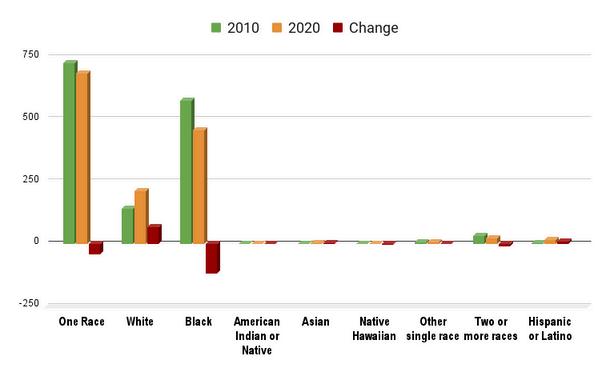
¹ California-Kirkbride, Pittsburgh Beautiful, https://www pittsburghbeautiful com/2020/01/27/california-kirkbride/ last accessed 5/2/2024
² California-Kirkbride, Pittsburgh Beautiful, https://www.pittsburghbeautiful.com/2020/01/27/california-kirkbride/ last accessed 5/2/2024
³ Equitable Tree Investment Plan: https://acrobat adobe com/id/urn:aaid:sc:US:1995efac-bf42-48f2-9bd9-10cb29a75164?comment id=c0433fe3-8157-49e8-b88d-ac47a1de2d41
⁴ City of Pittsburgh Neighborhood Profiles Census 2010 Summary File 1 (SF 1) Data, https://www ucsur pitt edu/files/census/UCSUR SF1 NeighborhoodProfiles July2011 pdf, last accessed 05/02/2024
⁵ City of Pittsburgh Neighborhood Population, https://data wprdc org/dataset/2020-census-redistricting-data-extracts/resource/a8414ed5-c50f-417e-bb67-82b734660da6, last accessed 05/02/2024
In 2021, the City of Pittsburgh’s Shade Tree Commission introduced The Equitable Tree Investment Plan via the Mayor’s office This plan calls for increasing tree canopy in Pittsburgh neighborhoods that lack adequate tree cover. California-Kirkbride is one of ten neighborhoods selected for Phase I implementation of the plan due to its 27 07 percent coverage, compared to the City average of 42 percent The California-Kirkbride Equity Report also showed that the neighborhood lacks tree coverage, which adversely affects the quality of life of those in the community ⁶
Most recently, Mystik Properties owns most of the private property in the neighborhood The City of Pittsburgh and Urban Redevelopment Authority also own many parcels in the neighborhood.
Additionally, the neighborhood lacks parks and greenways and has limited areas for residents to enjoy nature and its benefits. This phenomenon also exaggerates heat island effects in the community, which has adverse effects on residents, including high electricity bills for cooling in the summer, more incidences of asthma, and other heart health challenges within the population. Furthermore, elders and children in the community are most adversely affected by the lack of tree cover in key transportation corridors and play spaces.

The map shows heat severity indices for California-Kirkbride in the Summer of 2023 It can be seen that areas with less tree cover experienced higher temperatures on average compared to areas with more tree cover The post office building on the southern section of the neighborhood, south of California Avenue, also keeps the neighborhood perpetually hot. Proactive strategies will need to be applied to address this multiple-pronged root cause.
⁶ California-Kirkbride Investment Plan, https://acrobat adobe com/id/urn:aaid:sc:US:1995efac-bf42-48f2-9bd9-10cb29a75164? comment id=c0433fe3-8157-49e8-b88d-ac47a1de2d41
The ReLeaf California-Kirkbride plan aims to improve residents' quality of life by providing a roadmap and implementation projects to increase the neighborhood's tree canopy and resident participation in tree care and educational activities.
The Steering Committee for this planning process includes key partners from the community and a select group of community residents interested in mapping out a future for the neighborhood We would like to thank the following folks from the community for their support and engagement:

Deborah Reed
Gail Cox
Lenora O’Neil
Renee Smith
Shirley Seals
Tara Calhoun
Steering Committee meetings were also held throughout the ReLeaf planning process with senior residents from California-Kirkbride Here, we met to discuss critical issues to address within the plan Together, we planned and supported different events, including:
Community Clean-up Day with the California-Kirkbride Neighbors
Tree Tender training for residents
Tree Plantings in the neighborhood
Tree care events, which included pruning and mulching days
Tree Identification walks in the neighborhood
Tree Adoptions in 2023 and 2024

The development of a ReLeaf plan includes examining the community forest through the lens of these four questions: What do we have?
do we want? How do we get there? How are we doing?
Through using tree inventory data from City partners, survey collection by door-knocking and sending mailers to residents, attending community events, tree plantings, tree care activities, and tree adoption events, our team works to understand the community tree canopy's current condition and the attitudes of community members surrounding trees.
Our engagement and planning efforts in California-Kirkbride include but are not limited to the following:
Identify primary community engagement partners and work with them to establish relationships with individuals and community groups to support the steering committee
Conduct quarterly meetings with the steering committee members
Create and distribute a survey to assess residents' attitudes towards trees and general tree canopy health in CaliforniaKirkbride.
Survey community stakeholders through mailers and door-knocking
Engage within the community throughout the planning process by offering Tree Adoptions, tree planting, and tree care events in the neighborhood.
Conduct tree site assessments with community residents, City Foresters, and arborists from Western Pennsylvania Conservancy and Tree Pittsburgh to identify potential tree locations in the neighborhood
Reviewing and analyzing the Urban Tree Canopy (UTC) data is the first step in the ReLeaf planning process. This type of analysis allows stakeholders to understand the current state of the tree canopy and set goals for maintaining and growing their community forest Due to a lack of parks or greenways and limited natural areas, California-Kirkbride has one of the lowest canopy coverage in Pittsburgh, with only 27 07 percent coverage compared to the city-wide average of 42 percent canopy coverage.
The map to the right shows the tree canopy distribution and changes within this canopy cover from 2015 to 2020 Between 2015 and 2020, the neighborhood gained 6 09 acres of tree canopy cover and lost 5 27 acres of land, leading to a net gain of 0.82 acres. More canopy was lost in the Northern part of the neighborhood (especially in the Uniondale Cemetery), which also has a larger tree canopy distribution. The southern part of the neighborhood has less tree cover than the Northern part
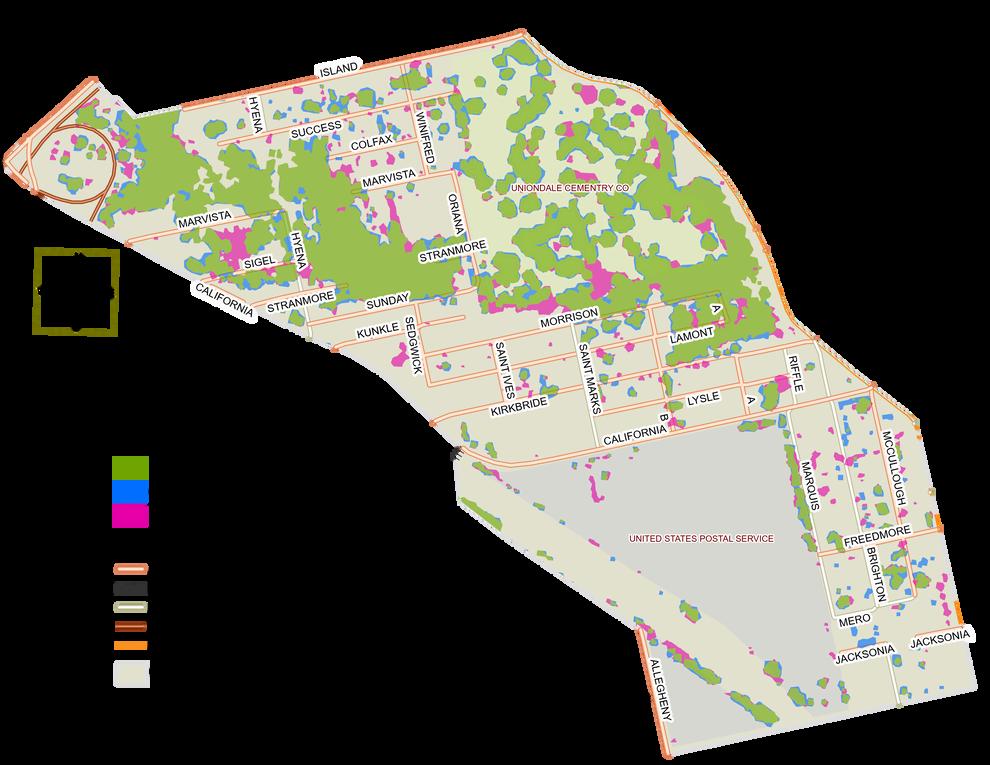
California-Kirkbride is one of nine Pittsburgh neighborhoods with no park coverage The neighborhood also lacks greenways, but these would be difficult to establish, considering the presence of two active railway tracks running through the neighborhood. However, more park space could be considered to fill existing vacant lots. Planting trees in potential parks would greatly increase the quality of life for California-Kirkbride residents, especially for the large proportion of those under 18 and seniors in the neighborhood ⁷


California-Kirkbride has 94 inventoried street tree locations
The neighborhood has a population of 706 people, and according to the 2020 U.S. Census Bureau, there is only one street tree per seven residents This is substantially lower than the national average of one tree per 3 residents but slightly higher than the city-wide average of one tree per 11 residents.
California-Kirkbride has street trees from 16 species across 12 different genera. Only two of the top five most common street tree species (red maple and little leaf linden) exceed the recommended ten percent stocking density for a biodiverse forest. Maple and linden trees exceed the 20 percent biodiversity threshold at the genus level This is a close-to-ideal starting position for community forest management Future plantings with biodiversity in mind, without creating issues based on the City of Pittsburgh’s planting moratoria, would prevent overstocking There is great potential for increasing the stocking densities for a more biodiverse forest in CaliforniaKirkbride, which should be considered when planning street tree plantings
Aside from the need for more trees in California-Kirkbride, there are concerns for the health of the already existing trees. According to the most recent street tree inventory, 17 percent of the existing trees are in poor condition or dead Of the other trees, 39 percent are in fair condition, and 19 percent are in good condition. 24.5 percent of the inventoried tree sites had no reported status Without proper maintenance, the condition of the trees will continue to degrade. However, by initiating maintenance on new and existing trees, the proportion of trees in good condition can grow, increasing the benefits of trees to the community
Due to the development of much of the neighborhood in the late 1800s and early 1900s, many natural areas were destroyed Because of this destruction, only 3 9 percent of California-Kirkbride remains a natural area. The vacant lots in the neighborhood would have to undergo many changes to recreate natural areas; therefore, introducing park space would be a more effective plan
Subsequently, improving access corridors to natural areas in adjacent neighborhoods would provide access to natural lands for California-Kirkbride residents
Tree Tenders are a major asset in maintaining the community forest. These volunteers are trained through the Tree Tenders program. It provides community members with tree planting and maintenance training covering various topics, including tree care, planting, pruning, biology, pests, and diseases This knowledge empowers them to support the growth and health of the community forest During the planning process for the ReLeaf California-Kirkbride plan, Tree Pittsburgh staff worked closely with the steering committee to organize a Tree Tender course for community residents. In 2023, eight newly minted Tree Tenders emerged from the community We will continue to track this progress during the plan's implementation phases
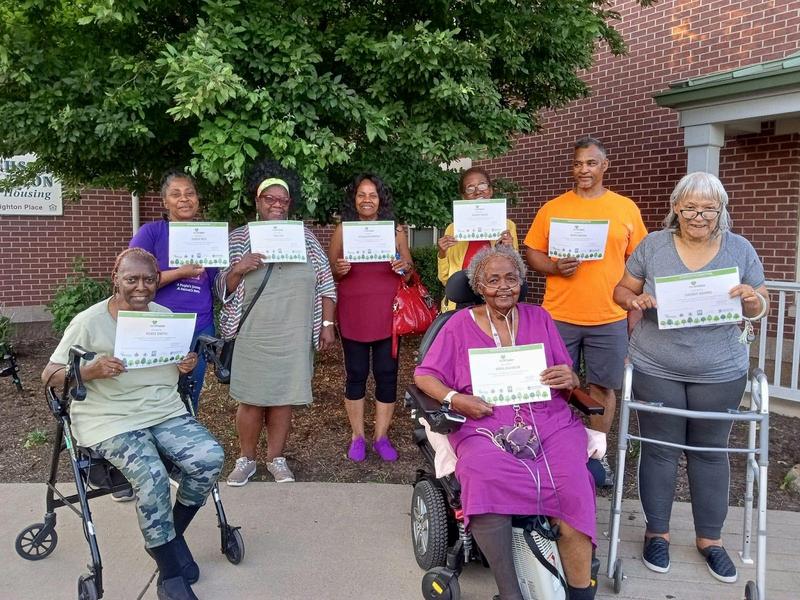
To capitalize on the opportunity to increase tree canopy on private property, Tree Pittsburgh hosts Tree Adoptions, where landowners can acquire free trees for their private properties Throughout the planning process, we hosted three Tree Adoption events in the neighborhood and had 128 containerized trees adopted at all those events. We will continue this tradition, which community members loved during the plan's implementation phase
Tree Pittsburgh hosts a Tree Adoption program that empowers residents to participate in improving the community tree coverage by providing free (up to three) trees to private property owners The program also works with residents to follow up on their tree-planting efforts after they have adopted trees. Since most of the loss in Allegheny County’s tree canopy cover from 2015 to 2020 was on private properties, this program targets this same group to balance the loss and gains in general canopy cover at the neighborhood and municipality levels Tree Pittsburgh held two Tree Adoption events in California-Kirkbride in partnership with the California-Kirkbride Neighbors (CKN) group during the planning process. Residents adopted almost all of the trees at the events, and CKN took any remaining trees to plant on their land throughout the neighborhood

Debbie Reed of California-Kirkbride Neighbors stands with newly-adopted trees in the fall of 2023
The planning team conducted a community survey to understand the residents’ desires in California-Kirkbride. The survey questions help establish a baseline understanding of the neighborhood's needs to address its current tree canopy challenges and opportunities.

We received 22 responses from renters, homeowners, seniors, youth, and adults Fifty percent of survey respondents own their homes, compared to 41 7 percent who are renters Additionally, 76 9 percent of the survey respondents identified themselves as female and 23.1 percent as male.


We asked how residents interact with the urban forest to understand community needs for their urban forest further. 76.9 percent of survey respondents feel there aren’t enough trees in the neighborhood, while 15 percent feel there are too many trees This may be based on where residents live in the neighborhood Parts of California-Kirkbride lay adjacent to underdeveloped land, with native and invasive tree species backed next to housing Seven percent of respondents feel that many trees are dying in the neighborhood.
Between 2015 to 2020, California-Kirkbride’s tree cover stayed at 26%. How do you feel about the NUMBER of trees in your neighborhood?
There are too many trees here. A lot of trees are dying here. There aren’t enough trees here.
More than half of all survey respondents (53 4 percent) shared that they have a forest, park, or cemetery nearby that they can walk to. Another 46.7 percent of respondents have a private tree or can see in their neighbor’s yard.
Where do you see trees in your neighborhood?
In the cemetery.
I have a private tree (in my yard).
My neighbors have trees in their yards. Forest or park.
Finally, respondents also shared outdoor activities in which they have participated within the community tree canopy 43 percent of respondents have sat under the shade of a tree, while 61 percent have actively engaged with trees by picking up leaves, taking care of trees, or picking fruit and nuts from the community forest. Residents have a connection with the community tree canopy and use it for a variety of activities.
In the past year, have you had the opportunity to participate in any of the following activities in the California-Kirkbride area? (Check all that apply.)
I have picked up leaves.
I have helped take care of a tree.
I have sat outside under a tree.
I have picked fruit, nuts, or seeds.
I have planted a tree.
Survey respondents had varying levels of awareness of the environmental benefits trees provide More than 50 percent of all respondents are aware of trees' ability to contribute to solutions in reducing global warming effects and stormwater run-off interception. However, an opportunity still exists to discuss with residents the role trees play in protecting against landslides
Reduce Stormwater Runoff
Landslides
Responses to questions about the economic benefits of trees revealed an education opportunity gap for community residents
Respondents are either not aware of or don’t agree with the responses for tree planting as a way to reduce utility bills and crime or increase home values. Since 50 percent of survey respondents are homeowners, this presents an opportunity to educate and distribute trees directly to property owners in the community
Finally, respondents also gave feedback on the many health benefits trees provide Most respondents know that trees help filter air pollutants that cause asthma and can help address symptoms stemming from heart disease. They also know the trees’ ability to encourage walking and physical fitness. 50 percent of respondents know of trees’ potential to support mental health and reduce stress and depression symptoms, while another 50 percent are not aware This presents an opportunity to speak about the health benefits of trees with residents and community members
Reduce Stress Hormones and Depression
Encourage Walking and Physical Fitness
We also asked respondents to share what trees they would get in their yards if they had an opportunity through Tree Pittsburgh’s tree adoption program 41 2 percent of respondents would like small flowering trees in their yards, while 23 5 percent would like a fruit tree 5 9 percent of respondents did not want a tree in their yards This response shows community residents' appetite for fruit and small flowering trees.
Tree Pittsburgh hosts Tree Adoptions for communities. What tree would you be most likely to adopt for your yard?
We also asked respondents to share the types of activities they would want to see or participate in with Tree Pittsburgh and other partners to support the community trees 53 9 percent of respondents would like to participate in tree care, tree identification walks, or planting trees around the neighborhood In contrast, 46 2 percent are not interested in the activities provided in the survey.
What activities would you like to participate in?
Attend a tree identification walk.
Become a certified Tree Tender.
Attend a tree care day (watering, weeding, mulching).
Plant a tree.
None of the above.
To increase the tree canopy and participation of residents in the neighborhood, Tree Pittsburgh staff assessed results from the community surveys and discussed these ideas with the steering committee members. Residents desire more green spaces in the neighborhood and increased youth participation and access to environmental programmi The following section presents a variety of priority projects for the next few years, including a budget and timeline to provide a way to reach the goal.
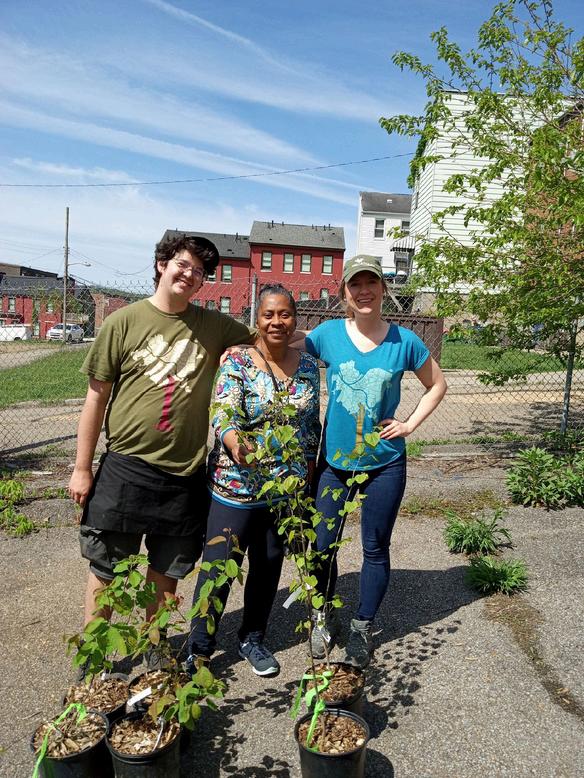

Trees will need to be planted for various uses to re-leafing California-Kirkbride. The following are proposed projects for future implementation.
Update street tree inventory for CaliforniaKirkbride
Plant new street trees in empty tree pits
Establish more community green spaces for residents to enjoy the outdoors
Have a planting on Marquis Way around the Post Office
Install a community orchard
Host Tree Adoptions for the community
Work with residents and City taxing bodies to understand ways of using vacant lots for greening efforts
Ensure tree planting efforts and priorities are included in the Comprehensive Planning Process for the City of Pittsburgh


Planting new trees is important to restoring the lost tree canopy and ecosystem services t provide However, preserving older and more established trees will be important in maintaining a healthy community forest in California-Kirkbride. This means caring for alread existing trees in the community The following priorities rose to the top for California-Kirkb residents during the planning process.
Remove and prune hazardous trees
Develop a tree maintenance plan for community trees with relevant partners
Distribute tree care educational materials directly to residents
Establishing a healthy community forest in California-Kirkbride will include building a solid c residents and supporters. Even with major developmental pressures, the community has s advocates who continue to raise their voices for a healthy community forest The following additional steps to take to increase buy-in from more residents in the neighborhood.
Engage youth from schools and the community in tree care and reforestation efforts
Establish annual Tree Tender workshops/programs
Strengthen programming with Union Dale Cemetery, Mistick, and other large private landowners to increase opportunities for tree planting and tree care in the community residents
Strengthen partnerships with other community organizations and local schools for programming and educational engagements

California-Kirkbride residents participate in a tree pruning workshop with Tree Pittsburgh staff.
Tree Pittsburgh is excited to continue the work in California-Kirkbride thanks to special support from the Inflation Reduction Act Funding for investments in Justice 40 and Environmental Justice census tracks in Allegheny County. In addition to adding feedback and capacity to work by other partners in the neighborhood, we will match resources to improve environmental conditions for the residents
Tree Planting
Update street tree inventory
Plant new street trees in empty tree pits
Establish more community greenspaces
Plant trees with large property owners to address heat island pockets
Install community orchard
Include recommendations in the City of Pittsburgh comprehensive plan
$ = Low cost (less than $5,000)
$$ = Medium cost ($5,000-$15,000)
$$$ = High cost (greater than $15,000)
City of Pittsburgh, Western PA Conservancy
City of Pittsburgh, Tree Pittsburgh, Western PA Conservancy (TreeVitalize), other partners as needed
City of Pittsburgh, Tree Pittsburgh, various additional implementation partners
Tree Pittsburgh, Pittsburgh Parks Conservancy, Western Pennsylvania Conservancy, and other partners
Tree Pittsburgh (Giving Grove), California-Kirkbride Neighbors, others
California-Kirkbride Neighbors, other community voices, Tree Pittsburgh
Remove dead trees
Prune hazardous trees
Develop and implement a tree maintenance plan in the community
Host Tree Adoption events
Distribute tree care education materials and trees directly to residents
Engage youth in the community and neighboring schools in tree care and reforestation efforts
Conduct annual Tree Tender workshops and programs in the community
Strengthen relationships with large
owners for tree care
$ = Low cost (less than $5,000)
$$ = Medium cost ($5,000-$15,000)
$$$ = High cost (greater than $15,000)
Monitoring the continued growth of tree canopy and residents’ participation with the community trees, analyzing canopy outcomes, and revising goals are keystones to maintaining a dynamic management approach for the community trees.

Tree Pittsburgh will assess the success of California-Kirkbride’s ReLeaf program at the end of its two-year plan Plans outside of the two-year window will be led by the ReLeaf California-Kirkbride steering committee with help from Tree Pittsburgh as funding provides. Reassessment will occur after two years to determine if the organized efforts are successful At that point, a complete evaluation and additional recommendations will be made to continue the ReLeaf California-Kirkbride “How Are We Doing” section This evaluation will assess metrics that will outline success and shortcomings.
Tree Pittsburgh will include various metrics in an annual report, including but not limited to the number of trees planted, survival rates, overall tree canopy cover change, tree canopy cover changes by land type, the number of Tree Tenders, the number of trees pruned, the number of trees mulched and weeded, an assessment of community attitudes and participation in maintaining the community forest, and an evaluation of annual tree benefits.
An annual report will also be created to evaluate progress and inform the community about program successes


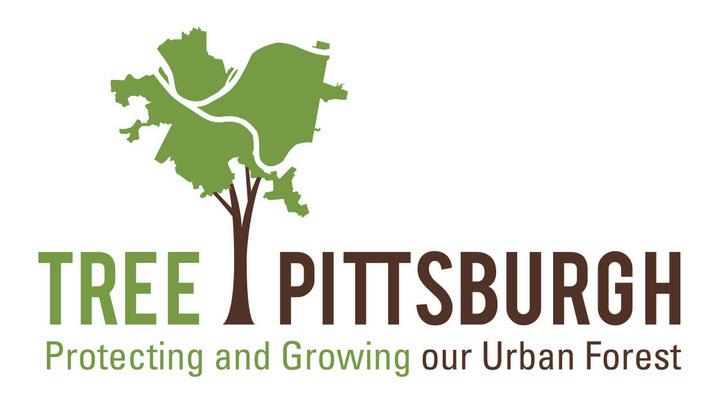
Tree Pittsburgh’s ReLeaf program is a stakeholder-driven process that brings urban forest planning to the neighborhood level We work with communities that want to chart a path toward a greener neighborhood Together, we’ll create a plan to grow the urban forest through tree planting, tree care, and education to help ensure long-term success








